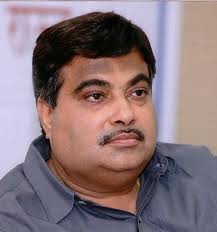
Mumbai, October 18: From a man who ran a family-owned furniture shop in a cobbled lane of Nagpur in the early nineties, 55-year-old Nitin Jairam Gadkari today, apart from being the president of the BJP, is the chairman of one of the biggest business groups in Vidarbha called Purti Group dealing in liquor, power, sugar, fuel, mineral and super bazaars.
Gadkari has come a long way from his days in student politics in ABVP (Akhila Bharat Vidyarthi Parishad) and RSS shakha worker; his political trajectory took a leap when an MLC from a graduate constituency in Nagpur expired. His proximity to RSS leaders helped him gain entry into the Vidhan Bhavan.
Even though the term was only for two years, Gadkari's path was chalked out very adroitly by a Nagpur journalist called Prakash Deshpande from Nagpur. Deshpande later became his personal assistant and key strategist.
Incidentally, Deshpande some years ago was found dead near the rail tracks between Deolali and Nashik. The case was never solved and it was closed with a remark that he fell down from the train in which he was travelling to Nagpur.
Gadkari, reportedly a leader with no mass-base, in 1995 first tasted the powers of being a minister after being given public works department portfolio when Shiv Sena -BJP came to power in Maharashtra. While he initiated several projects infrastructure projects in the state like Mumbai-Pune Expressway, his business venture Purti Group focussing on retail trading in the beginning also started flourishing.
In a span of five years, it started its first manufacturing company Purti Power and Sugar Ltd and today, it is regarded as one of the top sugar manufacturing companies in Vidarbha; as of now it is made of eight major group companies playing in sectors like power, sugar, fuel, minerals like manganese, iron and bio-fertilisers.
Gadkari, after his stint as a minister, never had to look back even though controversies continued to dog him at every juncture. A case in point some years ago was the discovery of the smothered body of seven-year-old girl Yogita Thakre, daughter of Gadkari's domestic help, inside his car. The case like that of Deshpande was given a quiet burial. And same happened to the questions that reared up when lakhs were splurged in the wedding of his son in Nagpur.
Gadkari's proximity with the RSS and the press also played a major role in helping him get out of soups he lands in. While his RSS god-fathers may have helped him in retaining him for the second term despite severe opposition from several quarters inside the party itself, his media friends have always bailed him out of tight corners when the BJP failed miserably in elections.





Comments
Add new comment